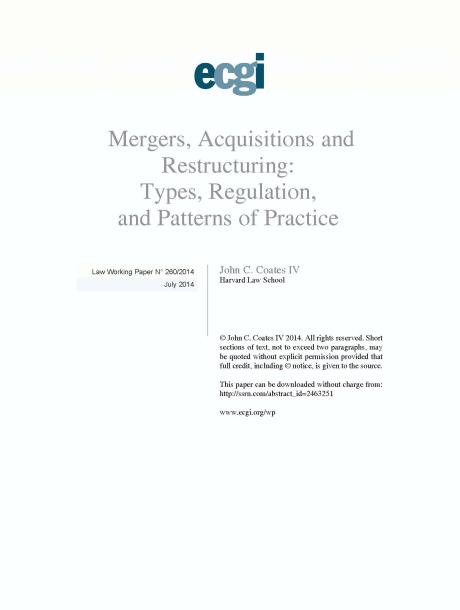
Mergers, Acquisitions and Restructuring: Types, Regulation, and Patterns of Practice
Abstract
An important component of corporate governance is the regulation of significant
transactions ? mergers, acquisitions, and restructuring. This paper (a chapter in Oxford
Handbook on Corporate Law and Governance, forthcoming) reviews how M&A and
restructuring are regulated by corporate and securities law, listing standards, antitrust and
foreign investment law, and industry-specific regulation. Drawing on real-world examples
from the world?s two largest M&A markets (the US and the UK) and a representative
developing nation (India), major types of M&A transactions are reviewed, and six goals of
M&A regulation are summarized ? to (1) clarify authority, (2) reduce costs, (3) constrain
conflicts of interest, (4) protect dispersed owners, (5) deter looting, asset-stripping and
excessive leverage, and (6) cope with side effects. Modes of regulation either (a) facilitate
M&A ? collective action and call-right statutes ? or (b) constrain M&A ? disclosure laws,
approval requirements, augmented duties, fairness requirements, regulation of terms,
process and deal-related debt, and bans or structural limits. The paper synthesizes
empirical research on types of transactions chosen, effects of law on M&A, and effects of
M&A. Throughout, similarities and differences across transaction types and countries are
noted. The paper concludes with observations about what these variations imply and how
law affects economic activity.





